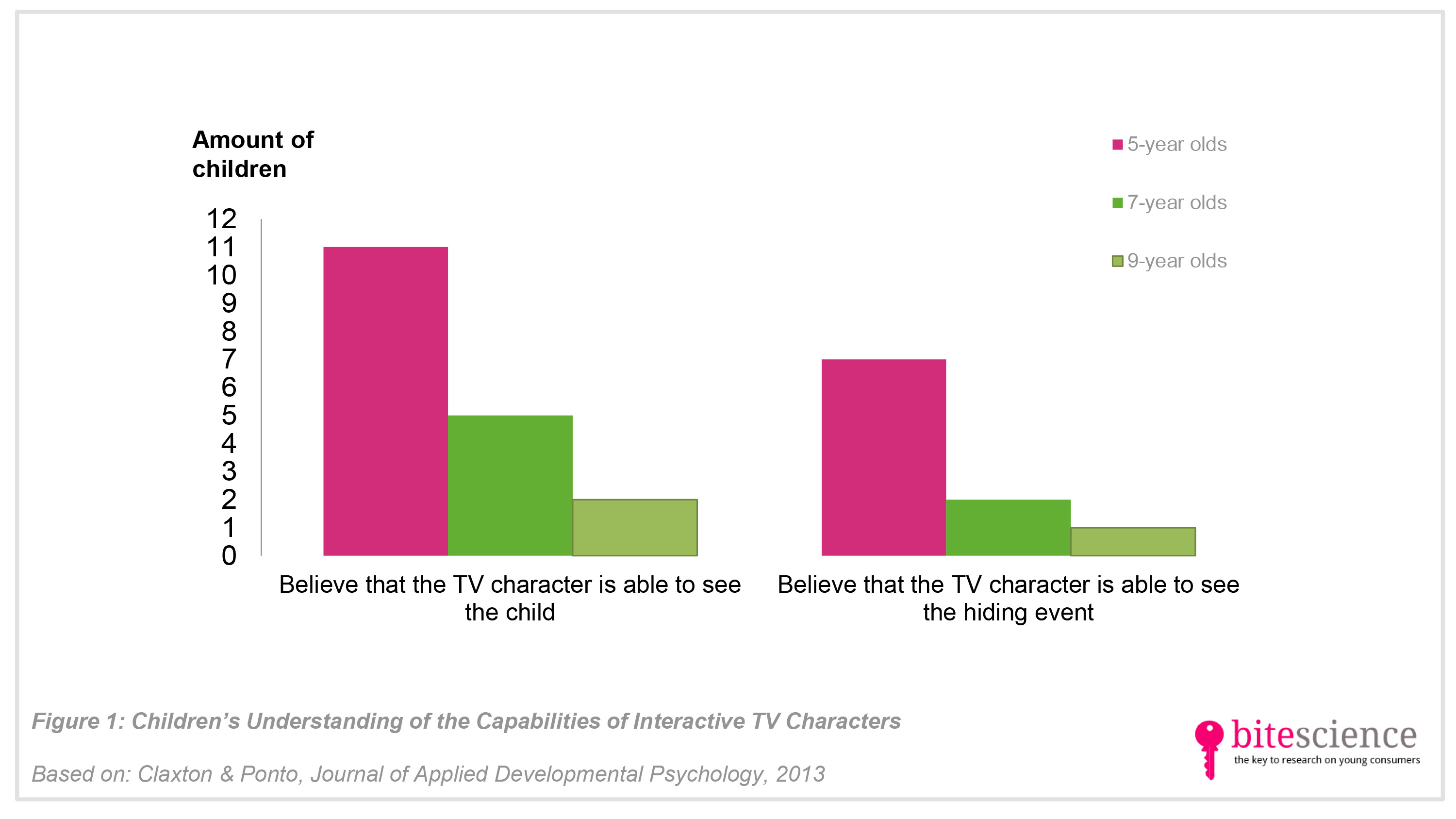
Why Young Kids Are Moved By Interactive TV Characters
Interactive TV characters, such as Dora the Explorer, are popular among youngsters. Children are encouraged by the characters to interact, for instance by helping them finding a hidden object. But why are children moved by these characters? A study published in the Journal of Applied Developmental Psychology, shows that this is because children (<7 years) believe these characters can see and hear them and that they can really interact together. Around the age of 7, however, children come to the understanding that TV characters are fictitious.
Take aways
- Younger children (< 7 years old) are more convinced that TV characters can see them and their actions than older children (7-9 y/o)
- Therefore, younger children tend to respond more to TV characters, for instance by performing the tasks they are suggesting.
- Especially for program developers, it’s important to keep the target group in mind. Children older than 7 years of age will be less moved by TV characters, and will probably prefer more humanly individuals.
Study information
The question?
Why are children moved by interactive TV-characters?
Who?
17 5-year olds (13 girls)
18 7-year olds (10 girls)
18 9-year olds (8 girls)Where?
Indiana, United States
How?
The children were told they would be playing a hiding game with the help of two girls. One was a live individual, and one a computer-generated character shown on a television. These ‘girls’ helped the children with finding a sticker by telling them in which of the two differently colored boxes they thought it was hidden by the experimenter. The child then chose a box, and this game was repeated for eight times. In order to test their understanding of the communicative interaction with the TV character, all children were asked if the character was able to see them and the hiding event. Children were asked why they chose for certain boxes as well.
Facts and findings
- Most 5-year olds chose for the boxes advised by the live individual and the TV character equally often.
- However, 7- and 9-year olds were more likely to choose for the boxes advised by the live individual.
- The 5-year olds more often believed that the TV character was able to see them and the hiding event than the 7- and 9-year olds (see Figure 1).
- When asked why they chose for certain boxes, only 12 children indicated that they based their decision on the advice of the live individual, because this person could actually see the experimenter hiding the sticker (e.g., “the cartoon didn’t have real eyes”, “the live girl could see, the TV girl couldn’t”).
- No age differences were found for giving this right answer.
- Critical note: The researchers studied only 17 5-year olds, 18 7-year olds and 18 9-year olds, and the conclusions may not hold for all children of these ages.
